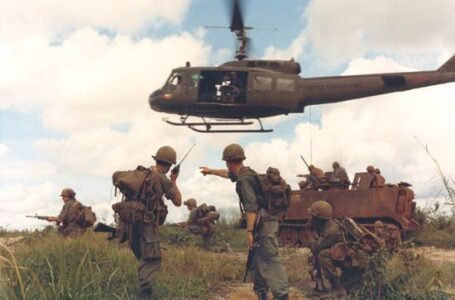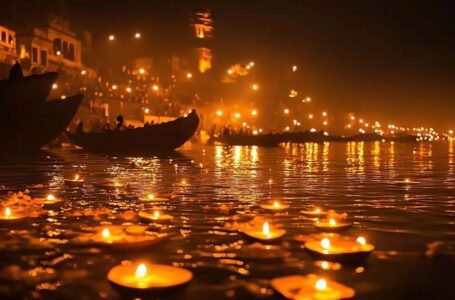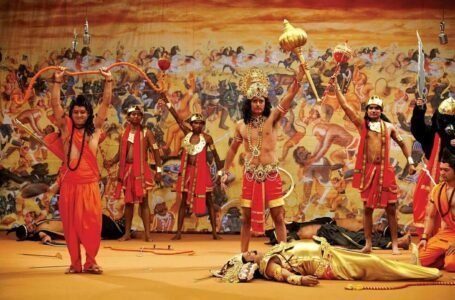Ashoka The Great – The emperor who gave us the chakra that we salute today.
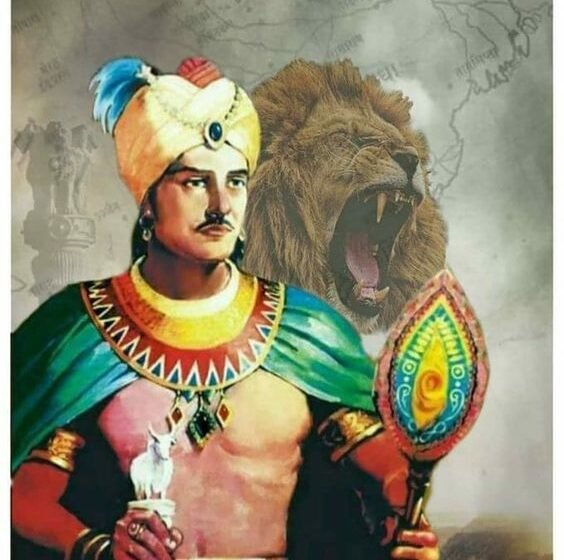
Ashoka -The emperor who gave us the chakra that we salute today.
The 3rd ruler of the Mauryan Empire Ashoka was born to Bindusara and Subhadrangi around 304 BC in Pataliputra.
Legend has it that when Subhadrangi successfully gave birth, she yelled “Now I am A-shoka” (without sorrow) and so was he named Ashoka. Subhadrangi also had another son named Tissa (aka Vitashoka). It is infamously known through Buddhist sources like the Mahavamsa and Dipavamsa, that for Ashoka to take over the throne of his father he had killed one hundred of his brothers sparing only Tissa. However, rock edict number 5 mentioned officers appointed to take care of the families of his siblings and other relatives. Due to the contradicting pieces of evidence that we find from the ancient sources, it is safe to assume these are exaggerated versions to portray that even a violent person can get reformed through the influence of Buddhism. Like his grandfather Chandragupta Maurya who became a Jaina monk, Ashoka after the Kalinga war embraced Buddhism and became non-violent.

Ashoka had a son and a daughter named Mahendra and Sanghamitra respectively from his first wife Maharani Devi. Another son named Tivala through his second wife Karuvaki. One more son Kunala through his third wife Rani Padmavati. Tivala and Karuvaki were the only ones mentioned by their names in inscriptions (Allahabad pillar). Asandhamitra, the second wife of Ashoka died without a son and was replaced by Tishyarakshita.
Wars:
Ashoka ruled for around 37 years from 268 BC. Before becoming the emperor, Ashoka had hands-on experience in suppressing revolts in Taxila and Avanti and was also made the governor of Taxila and Ujjain by his father. He handled the situation with an iron fist and so he was also called Chandashoka.
The only major war during his reign was the Kalinga War (261 BC) and it was very significant in many aspects. Considered one of the goriest battles, it led to the falling of at least one lakh people. The war was fought against the Kalinga dynasty on Dhauli Hill and ended with an extreme bloodshed on either side ultimately in the favour of the Mauryans. Moved by the extreme sufferings the war caused, Ashoka abandoned offensive violence of all forms. The description of the war and how it impacted Ashoka was mentioned in the rock edict number 13.
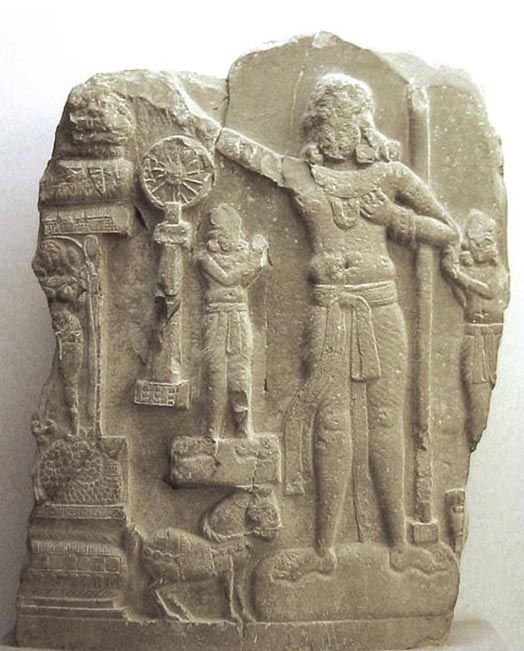
Kingdom:
Mauryan Empire reached its maximum territorial extent during the reign of Ashoka. This included the present-day Afghanistan, Pakistan, Bangladesh and India baring the region of Karnataka, Kerala, Tamil Nadu. He wanted to eliminate the only contender of sea routes, and so he waged war against the Kalingas.
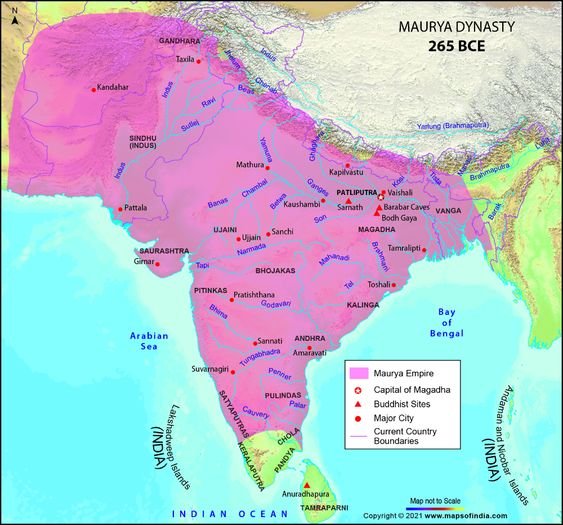
Shortly after the war ended, Ashoka embraced Buddhism in the 9th year of his reign. He then initiated the policy of Bherighosa which was preferred to Dhammaghosa; and cultural conquest replaced physical conquests which goes against what Chanakya had advised.
An appeal for all forms of non-violence in the empire was also proclaimed. For instance, the Kandahar inscription mentioned the impact of the proclamation on hunters and fishermen; it made them give up on killing animals and take up agriculture. However, the violence in punishments stayed and even got worse.
The lion capital of Ashoka at Sarnath erected after his conversion to Buddhism was to mark the site of Buddha’s first sermon. It has 4 lions sitting on a drum-shaped abacus that has a 24-spoke wheel adjacent to a horse, elephant, and bull. This later on became the National Emblem of India and the wheel also called the Dharmachakra sits in the middle of our national flag.
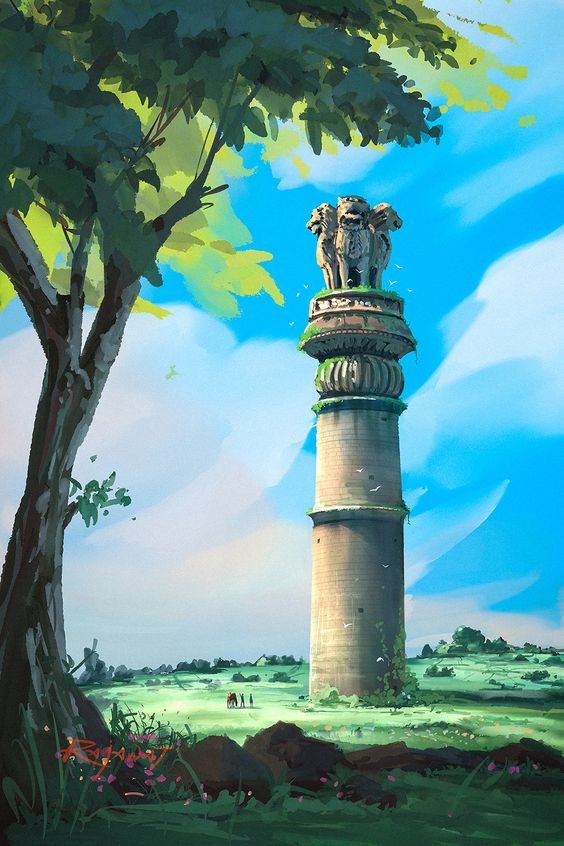
Much about him is known through rock inscriptions which he used to communicate with his people. He is also credited to have introduced stone architecture in India, an idea presumably borrowed from the Greeks. There are 39 rock inscriptions written mostly in the Prakrit language with Brahmi script across the empire. Most of the inscriptions refer to him as Devanampiya Piyadasi, meaning the one dear to gods. Only the minor rock edits at 3 places in Karnataka and one in Madhya Pradesh mentioned his actual name, Ashoka. He is also the first emperor to have expressed his thoughts and guidelines for the public through inscriptions.
Ashoka’s idea of social order and peace was through the maintenance of dharma in the society as was the case in Mauryan rule before him. But he took the concept too far to the point of making it the internal policy to unify the people and empire into a single political unit. For this purpose, he made elaborate arrangements like appointing Dhammamahamatras to propagate dharma across various social groups. He caused to disseminate through them the concept of “live and let live” which includes compassion towards all living beings, and good behavior towards fellow humans. He held that such well-behaved people would attain heaven. Animal slaughter was prohibited in the capital (Pataliputra). Certain animals and birds were also banned from killing anywhere in the empire. To monitor and enforce such proclamations, Rajukas were appointed to reward the well-behaved and punish the offenders. He asked these officials to tell the people that the King regards them as his own children.
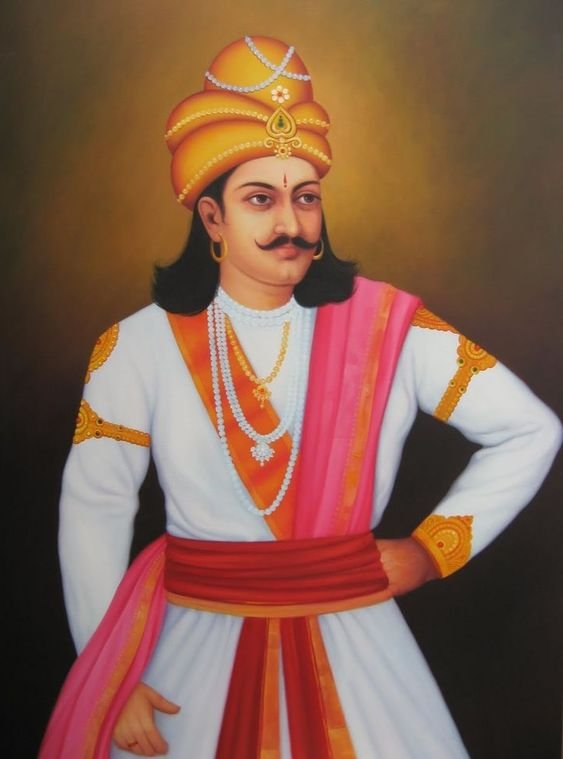
Ashoka built many stupas like the famous Sanchi stupa in Madhya Pradesh. He also organized the third Buddhist council at Asokarama in Pataliputra in the year 250 BC and sent missionaries to neighboring countries to spread the message of Buddhism and convert the people there. However, he never forced Buddhism on his people except for its secular aspects. This is evident from the fact that he offered numerous gifts to people of other faith.
Conclusion
Around 232 BC, Ashoka fell ill and passed away leaving the mighty empire divided into two. The western part was taken over by his son Kunala and the eastern part by his grandson Dasaratha. Even the viceroys and vassals declared themselves independent. Soon the empire got disintegrated due to the lack of a capable ruler after his demise.
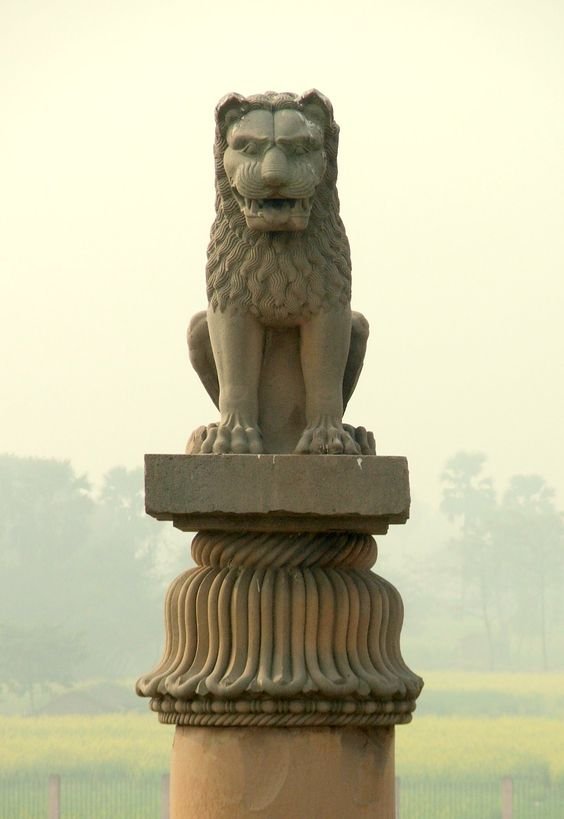
The Ashokan era is very significant for the introduction of cultural hegemony as he did not have any precedent for this approach. The prominence he gave to the non-violent method of unification served as an inspiration to the masses during the Indian freedom struggle many centuries later. Thus, Ashoka was clearly ahead of his time and his chakra rightfully deserves to be placed in our national flag.
